2014
Western States Rural Transportation Technology Implementers Forum
June 17th-19th, Yreka, California

SCHEDULE OF EVENTS
Tuesday, June 17, 2014
4:00 pm to 7:00 pm Registration
5:00 pm to 6:30 pm Reception (no-host)
6:30 pm to 9:00 pm Dinner Reception
Wednesday, June 18, 2014
7:00 am to 8:00 am Breakfast
8:00 am to 8:10 am Welcome and Introductions
8:10 am to 12:10 pm Technical Presentations
12:10 pm to 1:10 pm Lunch
1:10 pm to 5:00 pm Technical Presentations
5:00 pm to 5:15 pm Comments, Discussion, Evaluations
6:00 pm to 9:00 pm Dinner and Networking Session
Thursday, June 19, 2014
7:00 am to 8:00 am Breakfast
8:00 am to 8:05 am Welcome and Introductions
8:05 am to 11:30 am Technical Presentations
11:30 am to 12:00 pm Concluding Remarks, Evaluations
PRESENTATIONS AND DEMONSTRATIONS*
The Field Element Communications End Game: From POTS to Licensed Microwave
Jeremiah Pearce, P.E.
Caltrans District 2
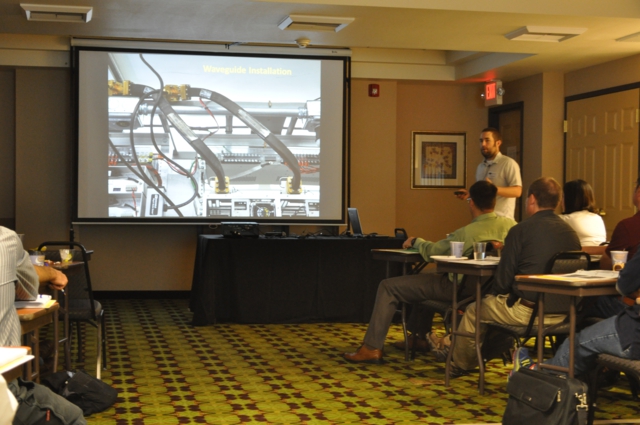
|
|
Field element connectivity and reliability has long been an issue when communicating with critical remote roadside
field elements within Caltrans District 2’s rural environment. The demand for higher bandwidth connections to the
roadside continues to grow as technology trends continue to offer more data at faster speeds. Consequently, TMC
operators and the public expect more information more frequently from roadside field elements. Additionally, there
is a general lack of high-bandwidth, low-cost services for most of the district. To address this challenge, Caltrans
District 2 has developed a private point-to-point microwave system capable of serving high-bandwidth connections to
remote roadside sites. At past Forums, Caltrans District 2 has presented different aspects of their system. This year,
ITS Engineer Jeremiah Pearce brought everything together by presenting the development and evolution of the overall
microwave system. He discussed strategy, design, implementation, construction, and maintenance issues of Caltrans
District 2’s point-to-point microwave system, the licensed 11 GHz microwave backbone project, and the current 4.9
GHz licensed mountain-top-to-roadside radio upgrade project.
|
WSDOT LED Adaptive Roadway Lighting and Illumination Reform
Keith Calais
Washington State Department of Transportation
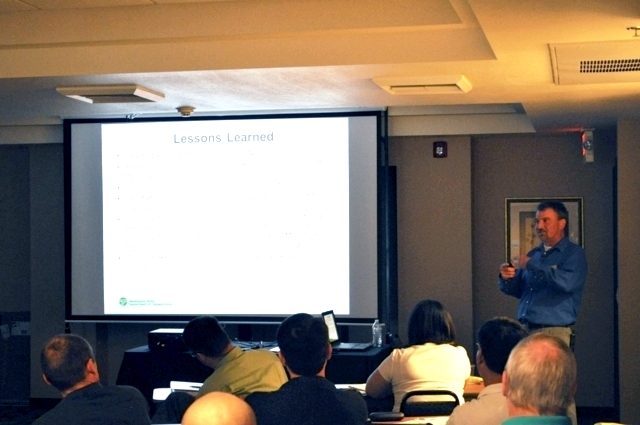
|
|
Each year millions of dollars are spent on illumination system repairs, preventative maintenance and utility costs. In
addition, for many agencies the ongoing preservation funding needed to perform life cycle replacement of these systems
far surpasses current and projected funding. With thousands of miles of state, county and city owned roadways and
intersections with and without illumination, a more strategic approach is needed to when, where and why to provide
roadway illumination. Consequently, Washington State DOT (WSDOT) is reviewing and reforming their illumination guidelines
in an effort to reduce illumination without significant negative impacts to safety and mobility. WSDOT Signal and Illumination
Engineer Keith Calais explained WSDOT’s need for illumination reform and the agency’s efforts to reduce associated electricity
consumption and maintenance costs. The agency installed an adaptive LED lighting system pilot project with dimming and
on/off operation by time of day at the US 101 interchange with Black Lake Boulevard in Olympia. Mr. Calais described the
installation, testing and evaluation of the system, and shared results of the pilot project. He also discussed a number
of practical lessons learned and how they are benefiting other projects as well.
|
Control of DMS, CCTV, HAR, and 511
Phil Braun
Idaho Transportation Department
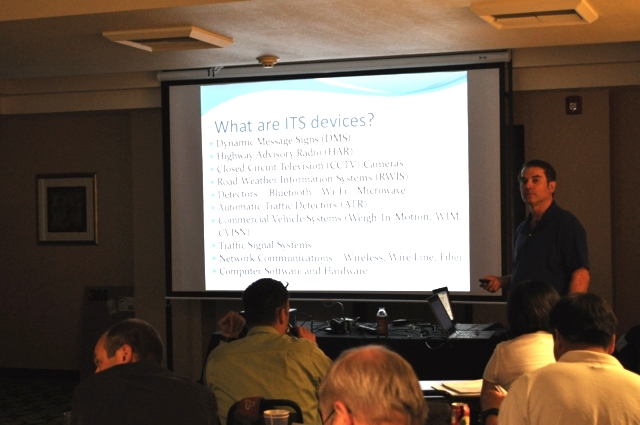
|
|
Phil Braun, an IT Systems Analyst and iNET Systems Administrator for the Idaho Transportation Department (ITD), discussed ITD’s
statewide integration project for DMS, CCTV, HAR, and 511. He explained some of the background behind the project, the past and
current management environment, the contracting process, and effects on design, procurement, deployment, and operations. Phil
discussed the technical challenges encountered by ITD and the various Districts and reported on integration efforts for CCTV,
DMS, HAR and 511. A number of lessons learned were shared with the group along with future plans and opportunities for ITS
applications along Idaho’s roads.
|
Commercial Wholesale Web Portal 2: Providing Caltrans’ Traveler Information Data to Third Party Developers
Sean Campbell
Caltrans, Division of Research, Innovation, and System Information (DRISI)
Traveler Information – The Preamble
Mike Jenkinson
Caltrans, Traffic Operations

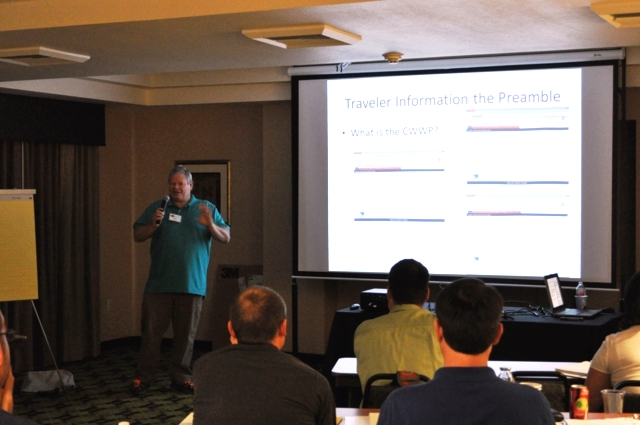
|
|
In order to provide more timely, accurate and reliable traveler information to ISPs while allowing
equitable access and consistent business and use practices, Caltrans developed the Commercial Wholesale
Web Portal (CWWP) in 2004. The CWWP2 addresses the limitations of the original portal, simplifies and
standardizes data output and retrieval, provides accurate geospatial information, and retrieves the District
status data as close to the source as possible. Mike Jenkinson from Caltrans Traffic Operations opened
the CWWP2 presentation with a history of traveler information in California. Sean Campbell, Caltrans DRISI,
went into detail on how the CWWP2 was designed, what it took to build and the various tools used, and
how the system works. Sean discussed who is using and applying the CWWP2 data, lessons learned during
development and deployment, and next steps for the system.
|
Model 2070 Controller and ATC: Present and Future
Herasmo Iniguez
Caltrans, Headquarters
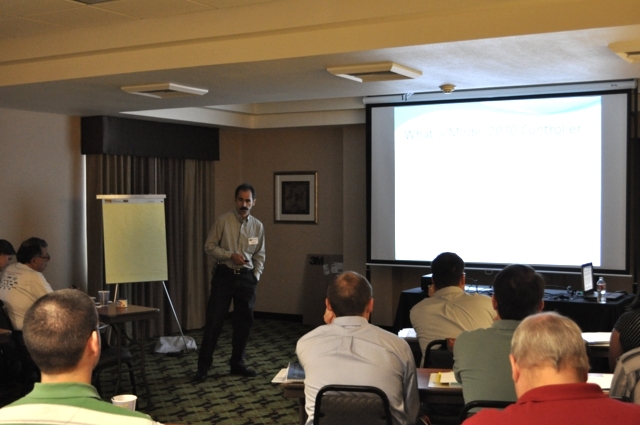
|
|
Herasmo Iniguez, Branch Chief for the Traffic Control Systems Branch at Caltrans, reviewed Caltrans’ current
deployment of the Model 2070 Controller, along with its history in California and lessons learned over the
course of its deployment. The presentation discussed the Advanced Transportation Controller (ATC) and Caltrans’
involvement with the national ITE standards development. Herasmo explained the objectives and development of
Caltrans’ Transportation Electrical Equipment Specifications (TEES) 2009 regarding the 2070 Controller and
the ATC. Over the last couple years, Caltrans has been working with the Department of Homeland Security to
tighten security on the Model 2070 Controller. Herasmo discussed the TEES requirements for cyber security
and the impact they will have on end users.
|
Organized Chain-Up: Save the Space – Bringing Order to Chaos
James Todd Daley
Washington State Department of Transportation
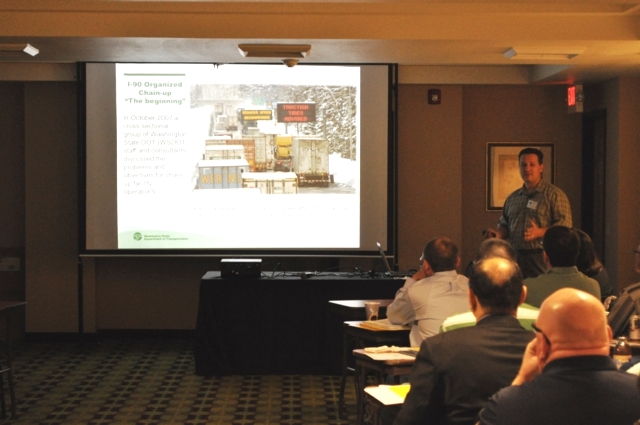
|
|
I-90 crossing Snoqualmie Pass is a critical high volume freight corridor serving Seattle and the greater Puget
Sound area. It receives an average annual snowfall of 457 inches creating conditions which obscure pavement markings
and require chains approximately 70 times per year. 7000 trucks cross the pass daily and during peak hours over 300
trucks all trying to chain-up causes congestion, chaos, and un-safe conditions. After a worldwide search to see what
others are doing to address similar situations, WSDOT’s South Central Region developed a first of its kind system to
increase safety, reduce delays, and allow for snow removal during chain-up conditions. James Todd Daley, the Assistant
Regional Traffic Engineer for the South Central Region, described the conditions that existed prior to the organized
chain up system’s implementation and reviewed the different design proposals that were considered. He then went into
detail on the design, construction, and operation of the current system. He shared results of the first season of
use and described the future operation and continued enhancement of the system.
|
TOP
*These presentations are posted as developed by the speakers and presented at the 2014 Forum. Alternative accessible formats of these documents can be provided upon request. Persons with disabilities who need an alternative accessible format of this information, or who require some other reasonable accommodation to participate, should contact Neil Hetherington, Visual Communications Manager, Western Transportation Institute, Montana State University, PO Box 174250, Bozeman, MT 59717-4250, telephone number 406-994-3566, e-mail: hetherington "at" montana.edu; or Dana May, Business Development Manager, Western Transportation Institute, Montana State University, PO Box 174250, Bozeman, MT 59717-4250, telephone number (406) 994-6361, e-mail: dana.may "at" montana.edu. |









